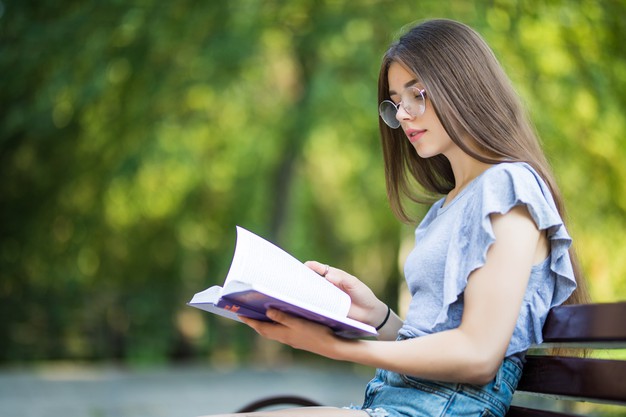4 Ways to Know Allah SWT, Complete with Islamic Evidence
Here are some ways to know Allah SWT along with the evidence. What are these ways? Let's check it out KLovers.

Kapanlagi.com - Poetry is one of the types of literary works that remains popular until now. Many people write poetry as an expression of their deep feelings. Poetry is synonymous with beautiful words. Therefore, poetry is often a romantic gift for a partner or loved one. Despite its popularity, not many people understand the meaning of poetry.
From year to year, poetry always has its own fans. In the world of literature, we are familiar with the names of great poets such as Chairil Anwar, WS Rendra, Taufik Ismail, Sapardi Djoko Damono, and Joko Pinurbo. They are great figures who truly understand the meaning of poetry. It is no wonder that their works are full of meaning and highly admired.
Indeed, it is very important to understand the meaning of poetry. Because by doing so, we will better understand the meaning and purpose of writing poetry. Well, compiled from various sources, here is an explanation of the meaning of poetry and other details.
The definition of poetry is one form of literary work, in addition to prose. Poetry is a literary work that is written beautifully in terms of word selection and the application of rhyme. Like other literary works, poetry is also created through creative and imaginative processes. Not only that, beautiful poetry also serves as a vessel for its creator to convey a deep meaning and message to the reader.

Definition of poetry according to experts (credit: freepik)
In addition to the general definition of poetry, some literary experts also express their opinions and explanations about poetry from their perspective. Here are some explanations of poetry according to experts.
1. Muhammad Hj. Salleh
The definition of poetry according to Muhammad Hj. Salleh is a form of literary work that is rich in language, and shows the wisdom of the poet and its tradition. Therefore, reading poetry is believed to make us wiser.
2. Putu Arya Tirtawirya
According to Putu Arya Tirtawirya, poetry is an implicit expression with implied meanings, and uses words that tend to be connotative.
3. Herbert Spencer
The definition of poetry according to Herbert Spencer is a form of conveying ideas that are emotional in nature, considering the value of beauty.
4. James Reevas
According to James Reevas, poetry is a language expression that is rich in attractiveness.

Definition of old poetry and its characteristics (credit: freepik)
Poetry is a literary work that has existed for a long time. Therefore, we are familiar with the term old poetry. The definition of old poetry is poetry that is written according to old rules or norms. For example, the number of lines, the number of stanzas, the sound of the verse or rhyme, the number of syllables in each line, and the rhythm.
As for some characteristics of old poetry, they are as follows.
1. Old poetry has characteristics of folk poetry and does not have an author's name.
2. Still bound by rules such as the number of lines in each stanza, verse, and the number of syllables in each line.
3. Usually conveyed orally or called oral literature.
4. Uses fixed figures of speech and clichés.
5. Contains stories about kingdoms, fantasy, and palace-centric.

Type of old poetry (credit: freepik)
Old poetry is a type of poetry that has existed since ancient times. Previously, old poetry was often used in various traditional events as prayers and mantras. Old poetry also consists of several types, as described below.
1. Pantun is a form of old poetry with a distinctive pattern of a-b-a-b rhyme, with each line consisting of 8-12 syllables, consisting of 4 lines with the first and second lines as the introduction and the third and fourth lines as the content.
2. Gurindam is a type of old poetry that consists of two lines with the rhyme a-a a-a, and contains advice.
3. Syair is a type of old poetry that originated from Arab, with the characteristic of each stanza consisting of 4 lines with the rhyme a-a-a-a. Syair can contain advice or a story.
4. Talibun is a type of old poetry with characteristics similar to a complete pantun. Each stanza consists of an even number of lines such as 6, 8, or 10 lines.
5. Mantra is a poem that contains words believed to have a supernatural power.
6. Karmina is a shorter type of pantun.
In addition to old poetry, there is also what is called new poetry. In contrast to old poetry, the understanding of new poetry is poetry that is no longer bound by rules in terms of writing, such as the number of lines, syllables, or rhyme. This means that new poetry is more free in terms of writing, language style, and even message delivery style. Therefore, new poetry does not have specific characteristics, except for its form of writing which is free from rules.

Types of new poetry (credit: freepik)
New poetry has a free form, making it easy to experience development or renewal. Therefore, this type of poetry continues to evolve, resulting in several types. Here are some types of new poetry:
1. Ballad is a poem that contains stories. The ballad consists of 3 stanzas, each stanza consists of 8 lines. The first line has a rhyme scheme of a-b-a-b-b-c-c-d, then the rhyme scheme changes to a-b-a-b-b-c-b-c, and the last rhyme scheme in the first stanza is used as a reference in the following stanzas.
2. Hymn is a new poem used as a tribute to God, the homeland, heroes, and Institutions.
3. Ode is a new poem that contains praise for deserving people. The tone and style of Ode are very formal, graceful, and praise both individuals and events.
4. Quatrain is a poem that consists of 4 lines in each stanza.
5. Quintain is a poem that consists of 5 lines in each stanza.
6. Satire is a poem that contains satire or criticism.
7. Septime is a poem that consists of 7 lines in each stanza.
8. Octave or Stanza is a poem that consists of 8 lines in each stanza.
9. Elegy is a poem that contains sadness.
10. Distich is a poem consisting of 2 lines or a single verse.
11. Sonnet is a new type of poem consisting of 14 lines divided into 2 parts, with the first 2 parts consisting of 4 lines each, and the second 2 parts consisting of 3 lines each.
12. Terzina is a poem consisting of 3 lines in each verse.
13. Epigram is a poem that contains guidance or teachings about life.
14. Romance is a poem that expresses the poet's feelings about love.
15. Sestet is a poem consisting of 6 lines.
Regardless of its type, whether old or new poetry, it must contain elements that must be fulfilled. This is the same as other literary forms such as short stories or novels. Poetry must also contain intrinsic and extrinsic elements. The existence of these elements can influence the beauty and depth of meaning of a poem. Here is an explanation of the elements in poetry.
1. Intrinsic Elements of Poetry
Intrinsic elements in poetry are certainly different from those in short stories or novels. However, the intrinsic elements in poetry also greatly influence the position of poetry as a literary work. The intrinsic elements of poetry include diction, imagery, figures of speech or language style, sound, rhyme, rhythm, and theme.
2. Extrinsic Elements of Poetry
Extrinsic elements of poetry are various aspects that can influence the process of writing poetry by poets. These aspects include historical aspects, psychological aspects, philosophical aspects, and religious aspects.

How to write poetry (credit: freepik)
It would be incomplete to learn the understanding of poetry without learning how to create it. Actually, writing poetry is not difficult. However, there are some things that need to be considered. Here are some things to consider when writing poetry.
1. Choosing a Theme
Choosing a clear and relatable theme will make the writing process easier. Moreover, themes like these will also be easier to convey.
2. Pay Attention to Diction and Rhyme
Poetry is synonymous with beautiful words and pleasant sounds. Therefore, pay attention to word selection or diction and the application of rhyme at the end.
3. Process of Crafting Words
In addition to diction and rhyme, pay attention to the process of crafting words. Consider and feel whether your chosen words have successfully depicted the feelings or meanings you want to express.
4. Finding a Title
Finding a title can be the last step or at the beginning before writing poetry. It all depends on the habit and comfort of each poet. However, make sure the title is interesting and can represent the content of the poem.
Those are some explanations about the understanding of poetry, both old and new. Hopefully, it is useful and can broaden your knowledge.
(kpl/psp)
Cobain For You Page (FYP) Yang kamu suka ada di sini,
lihat isinya
Here are some ways to know Allah SWT along with the evidence. What are these ways? Let's check it out KLovers.
Organic fertilizers are one of the choices for those of you who love gardening at home. It turns out there are several types of organic fertilizers that you need to know. Instead of being curious, let's directly take a look at the types of organic fertilizers that are suitable for home plants as follows.
Literary works, especially those in prose form such as short stories, novels, or drama scripts, will never be separated from intrinsic elements. So, what are the intrinsic elements classified as in literary works?
Not only spaghetti, it turns out that pasta has various types that sometimes make you confused to differentiate them. So, in order not to be confused or order the wrong menu at a restaurant, you also need to know the shapes and names of pasta. What are they?
If you are a beginner hiker, the profound mountain climbing quotes below can be an inspiration.
Here are some ways to register for regular Hajj and recognize what procedures you can do. What are the ways? Let's check it out KLovers.
Collage is a two-dimensional art work that is suitable for beautifying decorations. Interested in trying to make a collage? Read the following review
Various inspirations for baby names can be obtained from various popular literature. Here are 2-word Islamic baby girl names that you can use as inspiration.
Varicose veins can occur due to excessive pressure on the walls of the veins, causing the valves inside to weaken. The causes of varicose veins can occur due to various factors that can come from daily activities.
Here are some benefits of floor gymnastics for health, and suitable for beginners. What are these benefits? Let's check it out KLovers.
Indonesian spices are very diverse. Starting from the shape, aroma, and taste, each spice is different. So, to satisfy your curiosity, here are a series of Indonesian spices that are the mainstay of Indonesian cuisine and have various other benefits.
Brain cancer can occur in anyone with a number of symptoms experienced by the sufferer. The causes of brain cancer itself so far can be experienced due to several factors, both age and radiation exposure.